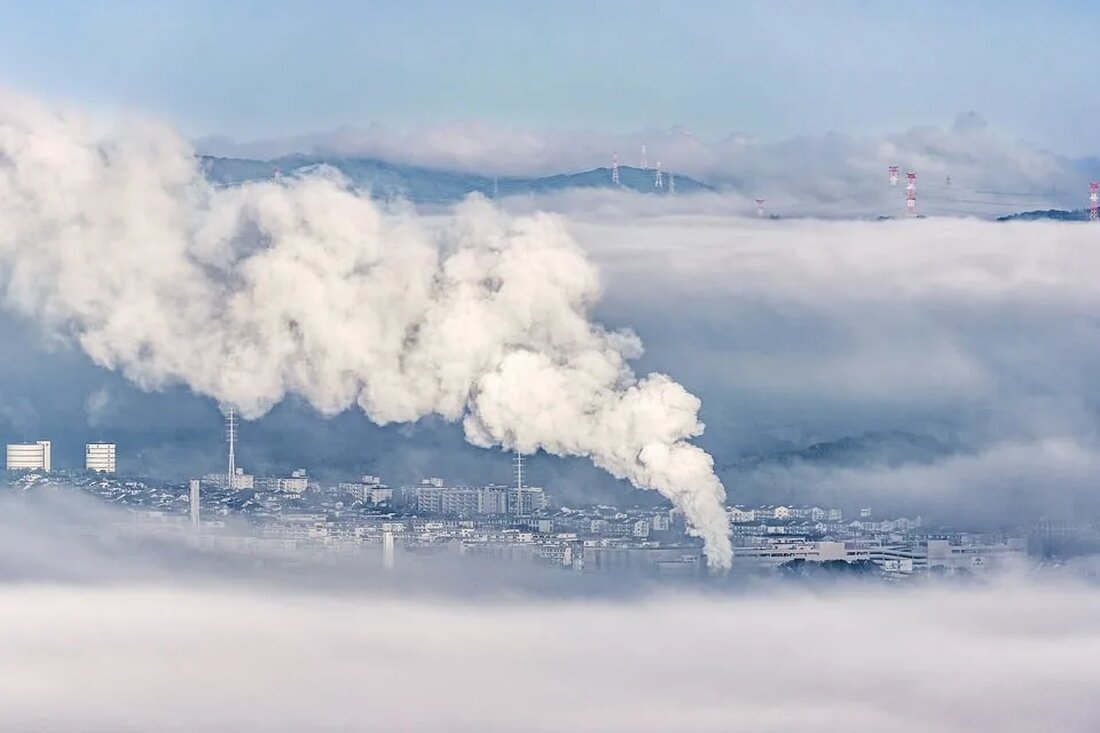Climate change and ocean warming: The consequences
The questions of what climate change and global warming are and how they affect our planet and our way of life seem to become more and more relevant. This article explains how these two interconnected phenomena affect us and the planets and what possible solutions there are. In climate change and global warming climate change and warming of marine are two major ecological questions that are discussed on a global level. Climate change refers to long -term changes to the average weather conditions on Earth, while heating the sea designates the increase in the water temperature, in particular that of the oceans. Climate change climate change is a natural geological appearance that takes place over millions of years. But …

Climate change and ocean warming: The consequences
The questions of what climate change and global warming are and how they affect our planet and our way of life seem to become more and more relevant. This article explains how these two interconnected phenomena affect us and the planets and what possible solutions there are.
in climate change and warming of sea
Climate change and ocean warming are two major ecological issues being discussed on a global scale. Climate change refers to long-term changes in average weather conditions on Earth, while ocean warming refers to increasing water temperatures, particularly those of the oceans.
Climate change
Climate change is a natural geological phenomenon that takes place over millions of years. But numerous scientific studies have shown that human activities are significantly accelerating the pace of this change. In particular, the emission of greenhouse gases, mainly carbon dioxide (CO2) and methane (CH4), from the burning of fossil fuels and agriculture contributes to global warming.
Global warming
Ocean warming is a direct result of climate change and occurs when the oceans absorb heat from the atmosphere. Warming oceans have far-reaching impacts, including sea level rise, ocean acidification, and threats to marine life and ecosystems.
The consequences of climate change and ocean warming
Climate change and the warming of the oceans have drastic effects on human and natural systems. Here/there are some of the most remarkable effects.
Effects on human systems
Human systems are extremely vulnerable to the effects of climate change and ocean warming. These include impacts on agriculture and food supplies, water supplies, human health and infrastructure.
Agriculture and food supply
Elevated temperatures and changed rainfall patterns can significantly affect agricultural productivity. Especially in the warmer regions of the world, these changes can lead to reduced yields for staple food such as corn, rice and wheat.
Water supply
Changed precipitation patterns and the increase in the evaporation rate due to the increased temperatures can affect the availability and quality of water for human use. In addition, the increase in the sea level can penetrate salt -containing sea water into fresh water deposits, which also affects water supply.
Human health
The effects of climate change and ocean warming can also affect human health. Heat-related deaths and illnesses may increase, as may the spread of vector-borne diseases such as malaria and dengue.
Infrastructure
Increased temperatures, sea level rise and extreme weather phenomena can cause significant damage to human infrastructure. Coastal areas in particular are vulnerable to flooding and erosion due to sea level rise.
Effects on natural systems
Marine life and ecosystems
Sea warming and ocean acidification can have serious impacts on marine life and ecosystems. Coral bleaching, a phenomenon in which corals lose color and die, is a direct result of warming and acidification of the oceans. This, in turn, impacts other marine organisms that depend on coral reefs.
biodiversity
Climate change can also significantly influence biodiversity. Many species are adapted to certain climate conditions and cannot react to quick changes. This can lead to the extinction of some types and to spread invasive species.
Possible solutions
Despite the dark prospects, there are measures that can be taken to limit the effects of climate change and warming of marine and to preserve the planet for future generations.
Emissions reduction
Reducing greenhouse gas emissions is one of the most important measures against climate change. This can be achieved by switching to renewable energies, improving energy efficiency and reducing meat consumption.
Adaptation to climate change
Adaptation measures are necessary to deal with the impacts of climate change, which are already inevitable. These include protecting coastlines, improving water supplies and adapting agriculture to changing climatic conditions.
Protection of the oceans
Ocean protection measures can help mitigate the effects of ocean warming. These include establishing marine protected areas, reducing marine pollution and supporting coral reef recovery.
conclusion
Climate change and warming of sea are complex and urgent global challenges. They require a comprehensive and targeted action of governments, companies, municipalities and individuals. It is crucial that we work together for a sustainable future.

 Suche
Suche
 Mein Konto
Mein Konto
